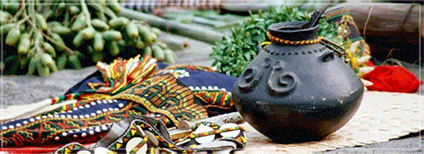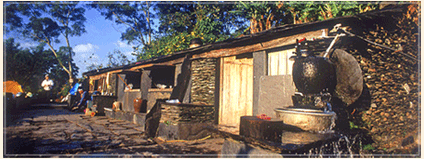|
|
|
||||||||||||||||||||||||
|
|
|
||||||||||||||||||||||||
|
|
|||||||||||||||||||||||||
|
|
|
||||||||||||||||||||||||
|
|
|
|
|
||||||||||||||||||||||
|
Maolin : Culture
Four groups of indigenous people add diversity to the local culture and provide colorful tourist resources. They are the Rukai, Paiwan, Bunun, and Tsou. The Rukai and Paiwan people both pay tribute to Pei Da Wu Mountain and respect it as their homeland. Both tribes make their traditional houses with stony slates, wear glass beads as a symbol of authority, and decorate sculptures with images of snakes and lily flowers. The society of both tribes is hierarchical. For example, the lily is treated by the Rukai as a holy flower and only noble people can wear it, whereas pottery kettles are a symbolic possession of noble Paiwan leaders. The higher ranks of these groups developed rituals and ceremonies that comprise great achievements in aboriginal arts.
Bunun and Tsou people reside in Taoyuan township and make their living by farming and hunting. They consider Jade mountain their holy ground. . Taiwan’s aboriginal people have distinctive and highly developed traditional cultures, which can be seen in their traditional clothing and in their songs and rituals. The Bunun are most famous for their song of harvest; while the Kuba (men’s gathering) is the best-known ritual representative of the Tsou.
The vigor of indigenous people can be seen and experienced in a variety of rituals and ceremonies. Reference: http://www.maolin-nsa.gov.tw/maolin/index.php?lang=ct&style=style2 |
|||||||||||||||||||||||||
  |
|||||||||||||||||||||||||



